Articles of 2009
Hazzard Makes The Hall
Larry Hazzard Sr. was at his desk at the IBF’s New Jersey offices when he was told that Ed Brophy, the executive director of the International Boxing Hall of Fame in Canastota, New York, was on the phone. Hazzard knew he was on the ballot for induction in the class of 2010, but he is the first to admit he didn’t know which way the voting would go.
“Maybe he was calling to tell me I didn’t make it,” said the always exuberant Hazzard, who looks and carries himself decades younger than his 65 years. “My pulse started to increase and I got very nervous. And I’m not a guy that people usually associate with being nervous.”
When Brophy informed him that he, along with manager Shelly Finkel, promoter Wilfried Sauerland, and matchmaker Bruce Trampler would be inducted in the Non-Participant category, the normally excitable but unflappable Hazzard was overcome with emotion, the likes of which he had never experienced before.
“Any guy who says he’s not excited about winning the biggest prize in boxing besides a world championship is full of bleep,” said the longtime referee who went on to serve as the Athletic Commissioner for the State of New Jersey from February 1986 until November 2007. He is currently the IBF’s chairman of officials, as well as the personal assistant to Marian Muhammad, the organization’s president.
One would be hard-pressed to decide in what role Hazzard was more effective. He was a world class referee, who once refused to back down from a verbal barrage from a fired-up Howard Cosell. As an athletic commissioner, he brought about scores of changes that continue to serve the sport so well.
And as a humanitarian, he, along with Rhonda Utley-Herring, founded an organization called Community Organizers Making Better Alternatives Today for Tomorrow in 2002. Better known as COMBAT, it utilizes boxing and ju-jitsu as vehicles to keep at-risk youths out of trouble.
“I’m just doing for others what people did for me when I was a youngster,” said Hazzard of COMBAT.
Hazzard’s road to Canastota began on the streets of Newark, New Jersey, where he says, “like any inner city in the 1950s, you had to fight your way home from school. The guys that were good with their hands got respect.”
Hazzard was athletically gifted, but the night he watched Sugar Ray Robinson box on the Gillette Calvacade of Sports he was mesmerized. Although he was just 13-years-old, he made his way to a little gymnasium in the William P. Hayes housing project and found out quickly that he was pretty good with his hands.
It didn’t take long for Hazzard to get respect, as he became a three-time Golden Gloves champion. While a student at Central High School, he also won the New Jersey State AAU championship.
“There were so many good boxers, so many role models, around back then,” said Hazzard. “It was easy for me to stay focused.”
Hazzard began to referee amateur boxing and he also attained a black belt in ju-jitsu in 1968. After earning a bachelor’s degree from Montclair State College in 1973, he took a job as a physical education and health instructor at Arts High School, where he later became the athletic director and department chairman.
After receiving a master’s degree in education, Hazzard became the vice principal at Westside High School and the principal of Broadway Junior High School. Both schools were located in Newark.
In the late 1970s, when the re-emergence of casino gambling brought boxing to Atlantic City on a regular basis, Hazzard quickly became the busiest of referees. He couldn’t have been happier.
“I refereed everyone under the sun,” said Hazzard, who is most excited when talking about what he believes just might be greatest era of light heavyweights in the history of the sport.
“I refereed these guys coming up, as well as when they were winning and defending their titles,” he continued. “Fighters like Matthew Saad Muhammad, Michael Spinks, Eddie Gregory (Mustafa Muhammad), Marvin Johnson, these guys were amazing. Even the second tier heavyweights were outstanding, and they all fought each other.”
He also marvels about being the third man in the ring in fights with the likes of Marvin Hagler, Frank “The Animal” Fletcher, Thomas Hearns, Meldrick Taylor, Pernell Whitaker, James Scott, who was fighting inside the walls of Rahway State Prison where he was serving a lengthy sentence, and the man Hazzard describes as “the great Buddy McGirt.” One of his all-time favorites was the epic battle between Hilmer Kenty and Sean O’Grady, which was 15 rounds of sustained action.
As thrilling as all that was for him, what really put Hazzard on the map was the work he did in title fight between WBC light heavyweight champion Matthew Saad Muhammad and challenger Jerry “The Bull” Martin in September 1981.
When Hazzard stopped the fight in the 11th round because Saad Muhammad was giving Martin a beating, television announcer Cosell, using his well-documented bully pulpit, harshly questioned his actions.
Hazzard clearly, concisely, articulately and forcefully defended what he did, stating that the safety of the fighter was foremost in his mind. It seemed as if he was waiting for a vitriolic rebuttal, but the normally tart-tongued Cosell was silenced. Hazzard believes this began what he describes as “a new concept in boxing as it relates to the primary duties of a referee.”
“Whether or not you agreed or disagreed with my stoppage, my exchange with Cosell really brought me to prominence,” said Hazzard. “I was quite eloquent in how I explained myself, and people appreciated that. I think it opened up a new level of awareness regarding fighter safety.”
Hazzard’s career as a referee was brief, lasting only from 1978 to 1985. He left that aspect of the sport, and he also took a leave of absence from his educational career, when he was sworn in as the New Jersey athletic commissioner in February 1986.
As he has done in all of his endeavors, Hazzard hit the floor running. Over the next two decades he instituted scores of safety features.
“I’m a big buff of boxing history, so I looked over the old rules and adapted them to the 20th century,” he explained. “I wanted to be an agent of change, so I modernized the rules that needed to be modernized.”
It was Hazzard who implemented the rule where fallen mouthpieces must be reinserted in the fighter’s mouth at the first break in action, rather than wait until the end of the round. When the HIV virus became a health scare, he forced corner men to wear rubber gloves in the state of New Jersey. He also brought about the unified rules that HBO viewers hear Harold Lederman talk about during broadcasts.
In 2007, Hazzard introduced the use of instant replay to correct the errors of referees. For such a hard-nosed, seemingly old fashioned guy, Hazzard’s head was not mired in conformity or tradition. He was more than willing to not only institute what he deemed to be much-needed changes, but also to embrace them for what he perceived to be the greater good.
One disturbing incident that took place under his stewardship still rattles him, and is something he thinks about on a regular basis. In November 1999, junior middleweight Stephan Johnson died from injuries incurred in a bout with Paul Vaden in Atlantic City. It was later determined that a medical document showing bleeding on Johnson’s brain was not brought to Hazzard’s attention prior to the fight.
“If it had been showed to me, he wouldn’t have fought,” said Hazzard. “I always prayed to God that during my watch no fighter would lose his life. He was the only one in over 20 years.”
Hazzard sued the New Jersey state attorney general in early 2008, claiming he was fired from his position the previous November for exposing the errors of subordinates, including the person he still believes to be responsible for Johnson’s death. Hazzard claims that he regularly told state officials about health and safety errors, but that his admonitions were ignored.
“Politics being politics, they chose not to listen,” said Hazzard. “The guy I hold accountable for that death was the guy I was trying to get rid of when I got fired.”
While speaking with Hazzard, I couldn’t help but ask him about an incident I had personally witnessed about 15 years earlier. While in the dressing room of an out-of-town opponent who was fighting a local attraction in the main event at a north Jersey venue, Hazzard appeared overly confrontational as he dressed down the manager, a soft, doughy Midwesterner.
When I asked him about it, he addressed the issue like he does all others: head-on and without the slightest bit of equivocation.
“I don’t specifically remember the incident you’re talking about, but it sounds like me,” he explained. “I’m very passionate about the sport of boxing, and I can be quite fiery. This is a tough sport, with tough people. You’re not dealing with choir boys. You got hustlers of every stripe in this game, and you got to meet fire with fire or you’ll be eaten alive.
“Most of the guys you deal with on a daily basis are clever and articulate, and they’ll sense any weakness in you,” he continued. “You have to exude a certain toughness to be successful. It sends a message to everyone that you’re in charge, that you won’t be walked over. I don’t mean to be abrasive, but if you get in my face, I’ll get in yours. Sometimes you got to be aggressive to get your point across.
“Anyone I have ever offended, I hope they know it wasn’t personal. It was business. I’m sincere, and I say what I mean and mean what I say. The biggest compliment of all is that a lot of the people I had moments with voted me into the Hall of Fame. They voted me in, I didn’t walk in. I tip my hat to them, and I want to thank them for giving me the greatest honor of my life.”
He also tips his hat to Marian Muhammad for helping him “put the crown” on his boxing education by enabling him to get an inside view of the business side of the game and for being such a good friend, and to Patricia, his beloved wife of 46 years, and their three children and seven grandchildren. They gave him all of the strength and motivation he ever needed, and his love for them grows stronger by the day.
When asked if they will join him in Canastota for induction day, I knew the answer before he even said it.
“You bet they will,” he responded. “This is big. Canastota is boxing’s Cooperstown, where I’ll share a wall with Sugar Ray Robinson and Joe Louis. Everybody in my family will be there. That’s a requirement.”
-

 Featured Articles3 weeks ago
Featured Articles3 weeks agoAvila Perspective, Chap. 330: Matchroom in New York plus the Latest on Canelo-Crawford
-
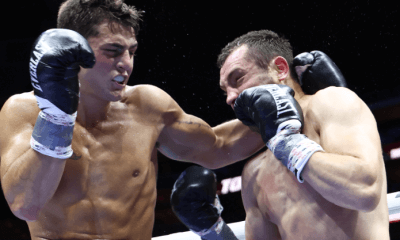
 Featured Articles2 weeks ago
Featured Articles2 weeks agoVito Mielnicki Jr Whitewashes Kamil Gardzielik Before the Home Folks in Newark
-
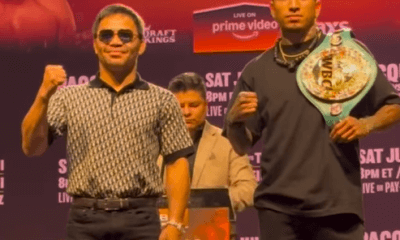
 Featured Articles4 weeks ago
Featured Articles4 weeks agoAvila Perspective, Chap 329: Pacquiao is Back, Fabio in England and More
-
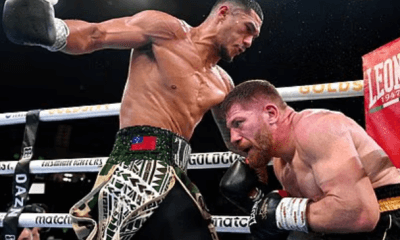
 Featured Articles4 weeks ago
Featured Articles4 weeks agoOpetaia and Nakatani Crush Overmatched Foes, Capping Off a Wild Boxing Weekend
-
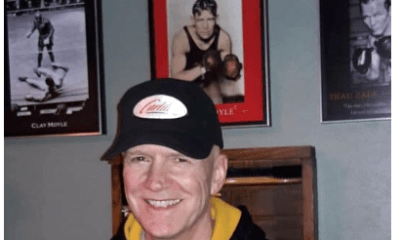
 Featured Articles3 weeks ago
Featured Articles3 weeks agoCatching Up with Clay Moyle Who Talks About His Massive Collection of Boxing Books
-

 Featured Articles4 weeks ago
Featured Articles4 weeks agoFabio Wardley Comes from Behind to KO Justis Huni
-
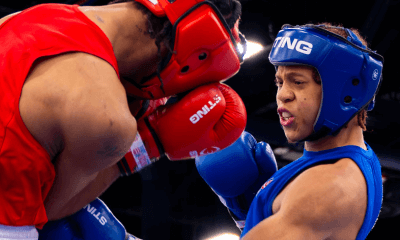
 Featured Articles2 weeks ago
Featured Articles2 weeks agoMore Medals for Hawaii’s Patricio Family at the USA Boxing Summer Festival
-

 Featured Articles3 weeks ago
Featured Articles3 weeks agoThe Shafting of Blair “The Flair” Cobbs, a Familiar Thread in the Cruelest Sport
















